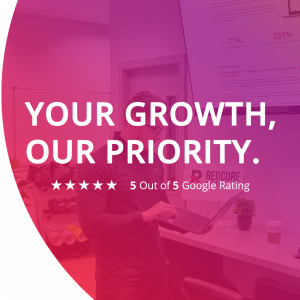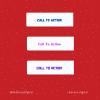The power of user focused content in 2020 and onwards will only get stronger as the demand for authoritative, engaging, and relevant content increases.
In This Post
Web content can be any digital information that can be published online on different platforms. Content can vary in form and purpose, and includes things like:
- News articles
- Podcasts
- Live streams
- Webinars
- E-books
- Infographics
- Explainer videos
- Apps
Content marketing is a powerful tool for attracting potential customers who will eventually become regular and loyal repeat business. It may sound counter-intuitive but your business is more likely to achieve customer loyalty if you are less focused on promotional campaigns.
It’s becoming more commonly accepted that successful marketing – creating awareness, generating and converting leads, etc. – requires great content. But there’s often still an assumption that anyone can create great content. Everyone can write, right? Well, no. Writing marketing content is a skill, just like videography or design. You need more than an understanding of subject matter and basic grammar. You need to know how to write for a specific audience, how to persuade people to take action, you need to understand SEO if you’re writing for websites or blogs, and much, much more. You also need time, and that’s why outsourcing content creation is an increasingly credible option for a lot of businesses.
Jessica Clifton https://www.jessicacliftoncopywriting.co.uk
What is content marketing?
Content marketing isn’t a new idea but it can now be considered essential in establishing relationships with your customers. And the rule of thumb is that it isn’t about you, it’s about your customers. You must first understand what they want and need before you can offer them anything.
The current content marketing trend is not so much about promoting your products but more about providing the right products and services for those who need it. Content marketing can help you establish credibility by being helpful in guiding people to know what they need to know.
What is user focused content?
The power of content is 2020 is geared towards user-focused content marketing. User-focused marketing is also known as customer-centric marketing. As the name implies, it means focusing on what the customer needs and wants instead of trying to glorify your brand or the products you offer.
User-focused content is customer-oriented in its approach. The content your company produces must be responsive to the needs and wants of your customers. Your company must keep in sync with the customers, otherwise you will alienate them and no matter how good the product or service you are offering, you won’t see the conversion rates you want.
Consumer or user-focused content is also a great way to rank better on SERPs (search engine results pages). Conversion rates will potentially increase as your credibility and authority increase.
If you know how to properly execute your content marketing, people will be interested and likely to convert into customers. It’s the classic AIDA principle of marketing:
- Awareness – this is the first goal of content marketing. The target audience must first become aware of what you are offering
- Interest – if the content is informative, entertaining, helpful or persuasive, you should be able to stimulate the interest of your target audience
- Desire – once interest is stimulated, you want your target audience to develop the desire to purchase or subscribe to whatever you are offering
- Action – finally, when the desire and need are strong enough, your target audience will likely take action by making a purchase (or whatever it is that you want them to do)
Avoid these things when creating content:
- Over-glorification of your brand and what you offer
- Too much emphasis on your products or services
- Using exaggerated claims and buzzwords
- Technically complex content from an internal perspective
- Absence or lack of value and benefits for customers
- Being too self-conscious and disconnected with customer touchpoints
There are several ways you can interact with your customers and understand what they need or what they want. For instance, you could conduct surveys and polls online, hold focus groups or conduct some social listening.
You should also engage with your customers through your social media platforms by answering their queries and responding to their comments. You can also use your website analytics to find out what type of content has the highest engagement – and then start producing similar content.
5 simple tips for delivering user-focused content
1. Be consistent but also responsive and adaptive – consistency here means maintaining high quality standards and creating content regularly. Your content should be informative, entertaining, helpful, and credible. You must also be responsive and adaptive in terms of the type of content your audience wants. For example, they might prefer video to written content – this will also depend on your product offering.
2. Use the correct language in communication with your clients – this mainly refers to the tone and style of your content, but it can also include informal communication elements like emojis. If you know your audience well, you can adjust your communication approach. It’s important to use the language they use. For instance, you can be technical and geeky if you are communicating with a tech-savvy audience.
3. Personalise your content – use data analytics to look at your customers’ behaviour online to create a more personalised approach to content.
4. Create content that plays on emotions, whatever that emotion may be – If it’s something your audience is feeling, you will create a better connection.
5. Be open, truthful, and transparent – People value those qualities both in other people and in brands.
The importance of user-focused content
A user-focused content strategy will help you attract your ideal customers. You can increase the E-A-T factor of your business by focusing on your customers’ needs and being responsive to market dynamics:
- Expertise – you will be seen as an expert if the information and resources you provide are in-depth and high quality, are specifically needed by your target audience, and this information cannot easily be found elsewhere
- Authoritativeness – once your reputation as an expert in your industry is established, you will also be seen as authoritative. People will start to cite your content and share it with others
- Trustworthiness – never mislead your customers and always provide evidence for your claims. This will help you gain trust and loyalty
What is data-driven content?
Data-driven content is directly related to customer-centric marketing. It is about using data analytics of online behaviour and preferences of your target audience as the basis for creating content. It’s a dynamic and responsive approach that is adaptive to changes in consumer behaviour.
If you know your customers well, you can plan your content and offer relevant solutions to their problems. You’ll create more engaging content that appeals to your customers. They will feel more involved and important.
Why do all businesses need data-driven content?
The customer-centric approach will only work if you have the correct data about your customers. And if you do, it will help your business stay relevant. All businesses, even brick-and-mortars, need some data to learn about who their customers are, their wants, needs, and pain points.
Data-driven content can help increase engagement and conversions since it will be completely relevant to the needs of your customers.
Does email marketing still work?
Despite the seeming dominance of social media platforms in online marketing, email marketing is still relevant – even important. The power of content in 2020 will not be quite as powerful without email marketing.
About 89% online marketers consider the strategy to be successful. It has 47% conversion rates and 35% ROI according to marketers. These are impressive performance metrics that may persuade you to include this tactic in your overall customer-centric strategy.
However, you should not overdo it and bombard your email subscribers with emails. According to a report by Hubspot, approximately 78% of email subscribers opted out because of email overload.
How to create great email marketing copy
Writing email marketing copy that converts is a skill. Here are some tips for creating effective marketing copy:
- Write a captivating headline that’s not too sensationalised
- Carefully craft your preview text and provide relevant information
- Follow basic online writing conventions like shorter paragraphs and lists
- Write in the language your audience uses
- Include some psychological tactics like fear of missing out or creating a sense of urgency
Need help with your content strategy and copywriting? Book a Discovery Call With Us Today.










